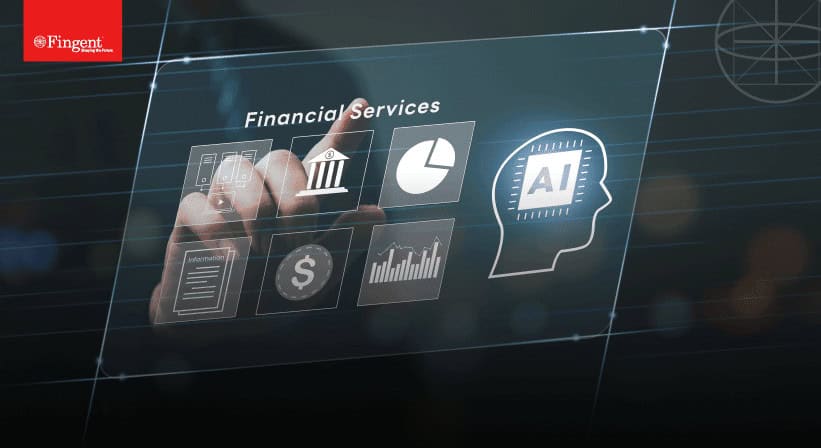Classifying Knowledge Representation In Artificial Intelligence
Knowledge Representation Models in Artificial Intelligence
Knowledge representation plays a crucial role in artificial intelligence. It has to do with the ‘thinking’ of AI systems and contributes to its intelligent behavior. Knowledge Representation is a radical and new approach in AI that is changing the world. Let’s look into what it is and its applications.
Understanding Knowledge Representation and its Use
Knowledge Representation is a field of artificial intelligence that is concerned with presenting real-world information in a form that the computer can ‘understand’ and use to ‘solve’ real-life problems or ‘handle’ real-life tasks.
The ability of machines to think and act like humans such as understanding, interpreting and reasoning constitute knowledge representation. It is related to designing agents that can think and ensure that such thinking can constructively contribute to the agent’s behavior.
In simple words, knowledge representation allows machines to behave like humans by empowering an AI machine to learn from available information, experience or experts. However, it is important to choose the right type of knowledge representation if you want to ensure business success with AI.
Four Fundamental Types of Knowledge Representation
In artificial intelligence, knowledge can be represented in various ways depending on the structure of the knowledge or the perspective of the designer or even the type of internal structure used. An effective knowledge representation should be rich enough to include the knowledge required to solve the problem. It should be natural, compact and maintainable.
Related Reading: 6 Ways Artificial Intelligence Is Driving Decision Making
Here are the four fundamental types of knowledge representation techniques:
1. Logical Representation
Knowledge and logical reasoning play a huge role in artificial intelligence. However, you often require more than just general and powerful methods to ensure intelligent behavior. Formal logic is the most helpful tool in this area. It is a language with unambiguous representation guided by certain concrete rules. Knowledge representation relies heavily not so much on what logic is used but the method of logic used to understand or decode knowledge.
It allows designers to lay down certain vital communication rules to give and acquire information from agents with minimum errors in communication. Different rules of logic allow you to represent different things resulting in an efficient inference. Hence, the knowledge acquired by logical agents will be definite which means it will either be true or false.
Although working with logical representation is challenging, it forms the basis for programming languages and enables you to construct logical reasoning.
2. Semantic Network
A semantic network allows you to store knowledge in the form of a graphic network with nodes and arcs representing objects and their relationships. It could represent physical objects or concepts or even situations. A semantic network is generally used to represent data or reveal structure. It is also used to support conceptual editing and navigation.
A semantic network is simple and easy to implement and understand. It is more natural than logical representation. It allows you to categorize objects in various forms and then link those objects. It also has greater expressiveness than logic representation.
Related Reading: Understanding The Different Types Of Artificial Intelligence
3. Frame Representation
A frame is a collection of attributes and its associated values, which describes an entity in the real world. It is a record like structure consisting of slots and its values. Slots could be of varying sizes and types. These slots have names and values. Or they could have subfields named as facets. They allow you to put constraints on the frames.
There is no restraint or limit on the value of facets a slot could have, or the number of facets a slot could have or the number of slots a frame could have. Since a single frame is not very useful, building a frame system by collecting frames that are connected to each other will be more beneficial. It is flexible and can be used by various AI applications.
4. Production Rules
Production rule-based representation has many properties essential for knowledge representation. It consists of production rules, working memory, and recognize-act-cycle. It is also called condition-action rules. According to the current database, if the condition of a rule is true, the action associated with the rule is performed.
Although production rules lack precise semantics for the rules and are not always efficient, the rules lead to a higher degree of modularity. And it is the most expressive knowledge representation system.
Gain the Benefits of Knowledge Representation
Used properly, knowledge representation enables artificial intelligence systems to function with near-human intelligence, even handling tasks that require a huge amount of knowledge. The increasing use of natural language also makes it human-like in its responses. Making the right choice in the type of knowledge representation you must incorporate is crucial and will ensure that you get the best out of your artificial intelligence system. If you need help with this, we’re here. Please reach out to us.
Stay up to date on what's new

Recommended Posts

03 Jul 2024 Financial Services
AI in Business: Preparing Leaders For The Revolution
AI in Business is a present reality! It’s a building revolution that is all-encompassing and is redefining business operations. You have only two options. Either ride on the crest of……

20 Jun 2024 Healthcare B2B
AI in Healthcare: Enhancing Patient Outcomes and Experience
Artificial Intelligence is a multi-talented assistant and has proven its worth in the healthcare industry. Healthcare organizations have found innumerable ways to use AI, from record maintenance to patient assistance.……

08 May 2024 Financial Services B2B
AI in Financial Services: Use Cases and Applications
Achieving perfection is no easy process. It is not impossible either. It takes a lot of effort and hard work but with the help of Artificial Intelligence, this process can……

24 Apr 2024 B2B
A Leader’s Blueprint for AI Success
How Are Businesses Using AI? The verdict is crystal clear—leaders today must embrace AI solutions to stay ahead of the curve and survive in the rapidly evolving business landscape. AI……
Featured Blogs
Stay up to date on
what's new












